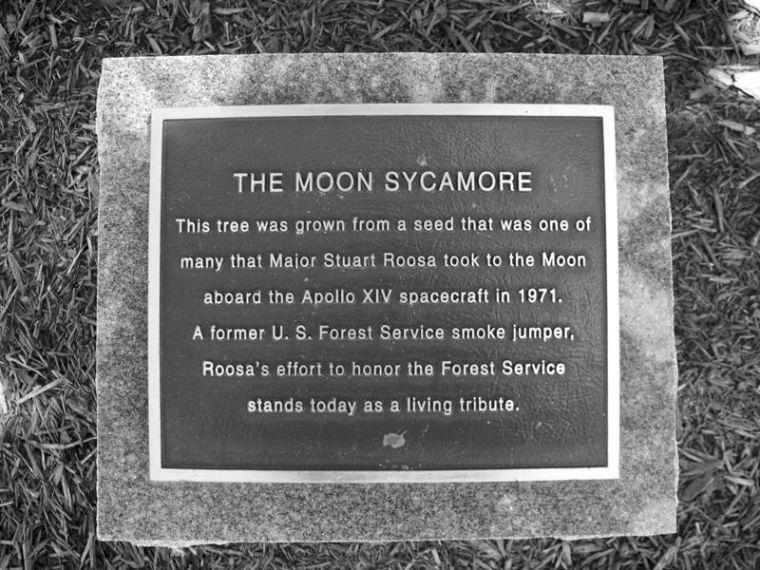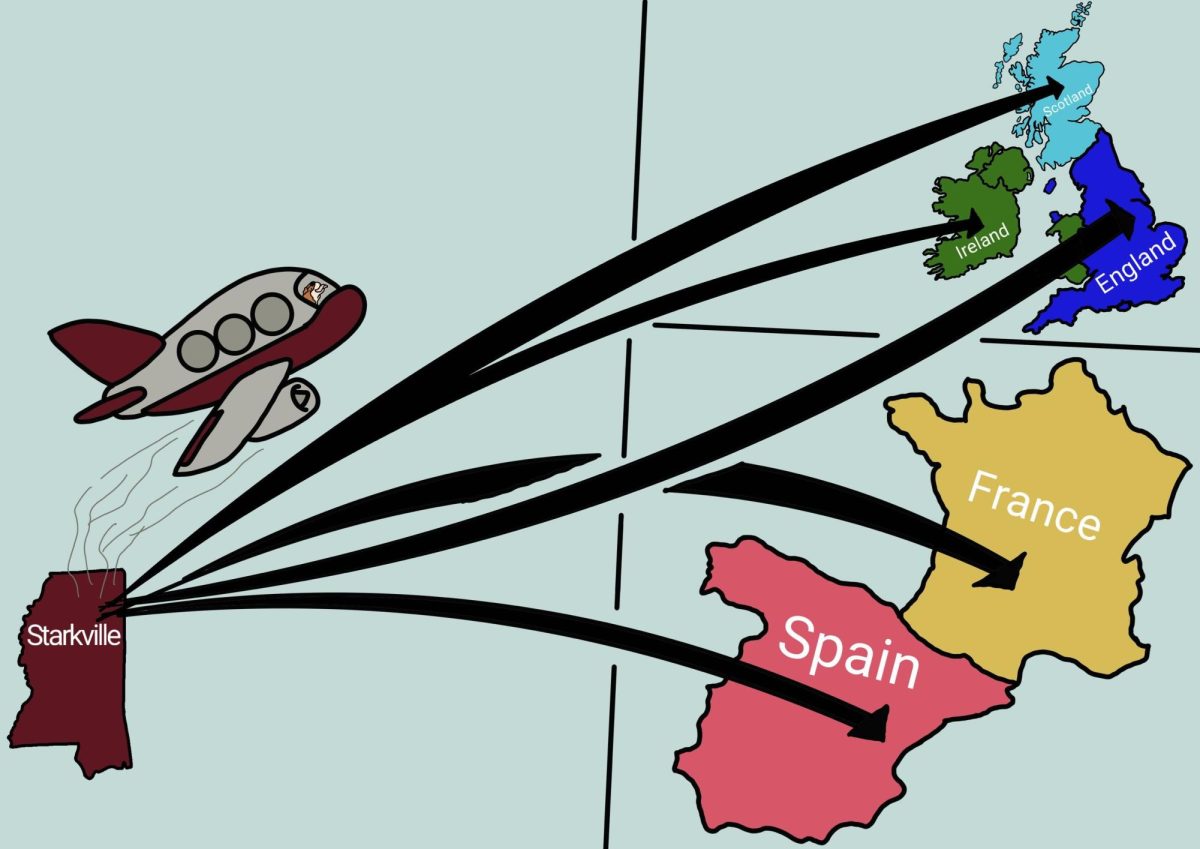On the west side of the Mississippi State University Junction, across from Dorman Hall by the corner of Creelman Street and Stone Boulevard, a visitor of the moon stands tall and healthy. MSU’s Moon Tree Sycamore, planted in 1975, was brought into orbit around the moon by Air Force Colonel and former smoke jumper Stuart Allen Roosa on Apollo 14’s flight on Jan. 31, 1971.
An article written by Dr. David R. Williams on the National Aeronautics and Space Administration website entitled “The ‘Moon Trees'” explains how Roosa was selected.
“The project began after Roosa was chosen for the Apollo 14 mission. Ed Cliff, Chief of the Forest Service, knew of Stuart Roosa from his days as a smoke jumper and contacted him about bringing seeds into space. Stan Krugman of the Forest Service was put in charge of the project and selected the seeds for the experiment. Seeds were chosen from five different types of trees: Loblolly Pine, Sycamore, Sweetgum, Redwood and Douglas Fir,” the article said.
The goal was to discover if space effected how the seeds sprouted. According to NASA, around 500 seeds were brought into space. When the seeds made it back, 420 to 450 plants were grown by the southern Forest Service who were placed in charge of the project.
Andrea Gillich, support services specialist for the United States Department of Agriculture Forest Service Research Station at the Southern Institute of Forest Genetics in the Harrison Experimental Forest, supplies more information on the Moon Trees and Roosa.
“Astronaut Allen Roosa, who was once a Forest Service smoke jumper, brought the seeds into space to see what effect it would have on them,” said Gillich. “All the states were given seeds; they usually went to the State Forester.”
Gillich said smoke jumpers are the first responders to forest and wild fires where firefighting equipment cannot always be taken.
Roosa’s daughter recently left for Russia to bring a Moon Tree to the Russian cosmonauts, said Gillich.
“NASA launches search for ‘moon trees,'” an article written by Elizabeth Weise published by USA Today in February, said NASA is now attempting to find all the surviving Moon Trees.
“NASA’s interest in tracking them down now is partly driven by the Apollo mission anniversary, but also because some of the tree species are dying off, having lived out a normal lifespan of roughly 40 years,” the article said.
The MSU Sycamore was planted in ‘75 and grew without harm until Hurricane Katrina in 2005 when the top snapped off. Today the tree seems healthy and ready to withstand many years to come.
The Junction boasts ‘extraterrestrial’ tree
Donate to The Reflector
Your donation will support the student journalists of Mississippi State University. Your contribution will allow us to purchase equipment and cover our annual website hosting costs.





















































































